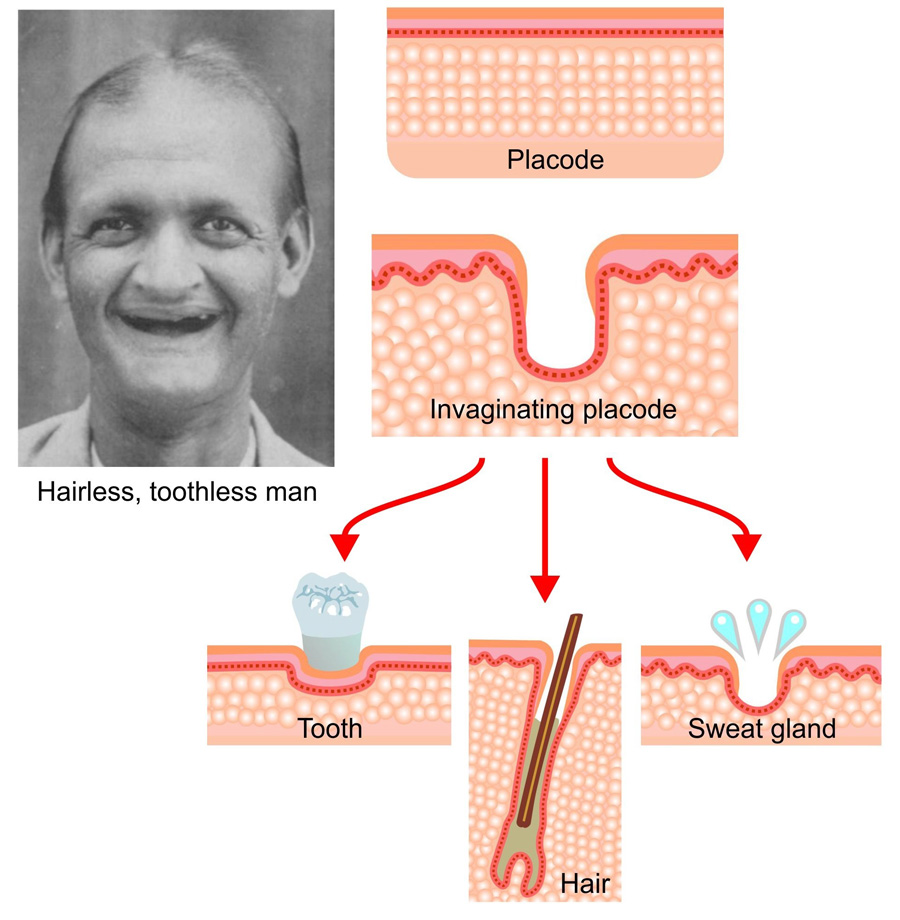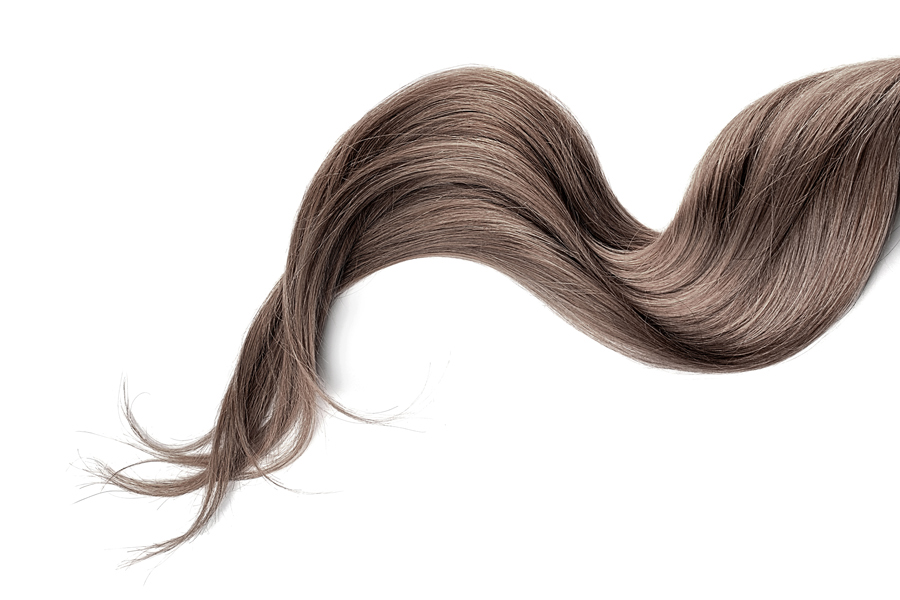The origin of hair: The evolution of the trichocyte
Hair is a defining feature of mammals and was essential for their adaptation to a range of ecological niches. To shine a light on the evolution of hair, Professor Thomas Litman of the University of Copenhagen, Denmark, and Professor Wilfred D Stein of the Hebrew University of Jerusalem, Israel, investigate the ancient origins of the proteins which interact structurally with keratin to form hair. Showing that ancestors of these proteins existed in the cells of organisms long before the evolution of mammals, Litman and Stein hypothesise that the interaction between these proteins and embryonic structures called placodes – which are found in animals that appeared long before the mammals – could have resulted in the first hair-producing cells.
Hair, including fur and wool, is important in mammals for thermoregulation – the regulation of temperature that allowed mammals to adapt to a wide range of environments. Early mammals first appeared around 180 million years ago. They were able to be nocturnal, since their evolution of hair kept them warm during the cool night hours and increased the amount of time they could spend on activities such as hunting or foraging. The earliest known evidence of hair is actually the presence of whiskers – functional hairs used to sense the surrounding environment – on therapsids, mammal-like reptiles which existed around 290 million years ago and are known as the ancestor of modern mammals.
Keratin-associated proteins interact structurally with keratin and determine the properties of hair, such as thickness or curliness.Professor Thomas Litman at the University of Copenhagen in Denmark and Professor Wilfred Stein at the Hebrew University of Jerusalem, Israel focus on the question: what is the origin of hair?
Keratin-associated proteins
Hair is produced by cells called trichocytes and is formed from the combination of keratin, a structural fibrous protein, and keratin-associated proteins (KRTAPs). Studies on wool as a commercial product have shown that KRTAPs interact structurally with keratin and determine the properties of hair, such as its thickness or curliness. Different mammal species have different assortments of KRTAPs which contribute to the variations of hair, fur, and wool that support adaptation to specific ecological niches.

In humans, these proteins are encoded by 93 KRTAP genes divided into many sub-families. The proteins these genes encode are divided into two groups based on their component amino acids: those with a high or ultra-high sulphur content contributed by the amino acid cysteine, and those with a high content of the amino acids glycine or tyrosine. Litman and Stein used the Basic Local Alignment Search Tool (BLAST) to compare the amino acid sequences of KRTAPs in humans in order to group proteins with similar sequences. Their results aligned with the high/ultra-high sulphur and high glycine/tyrosine groupings, with proteins within a group being more similar to each other than proteins in the other group. Since proteins with similar sequences are likely to have evolved from the same ancestor, the researchers’ findings suggested that the KRTAPs in animals may have diversified from two ancestral proteins.
Expanding this comparison, the researchers sought to investigate whether it was possible to infer more information about these ancestral proteins. Litman and Stein again used BLAST to compare the sequences of KRTAPs and other human proteins. For the group of proteins high in glycine or tyrosine, the protein occludin was consistently found to have high sequence similarity with KRTAPs. Occludin is a plasma-membrane protein essential for the regulation of tight junctions, the protein structures which selectively allow some molecules to pass across the membrane and between cells.

For the high-cysteine group, the results were more varied. However, the protein metallothionein was found to have similarity in sequence with the highest number of KRTAPs. Metallothioneins are a family of proteins found in the membrane of the Golgi apparatus – an organelle in eukaryotic cells. The metallothioneins bind to metals to regulate their content within cells and prevent metal toxicity. Based on these results, Litman and Stein hypothesise that the ancestors of modern KRTAPs could have been occludin- and metallothionein-like proteins, possibly involved in essential processes within cells.
Broadening the search further, Litman and Stein then compared the sequences of human KRTAPs to those from a range of other organisms, both mammals and non-mammals. Proteins with similar sequences to the KRTAPs were found in many other organisms including the sea anemone, fish, birds, reptiles, and molluscs. It was found that the number of KRTAP genes in animals increased over evolutionary time – for example the sea anemone was found to have 2 KRTAP genes, the platypus (which emerged later) has 20 KRTAP genes, and humans (emerging relatively recently) have 93. The KRTAP-like proteins are expressed in a wide variety of tissues and function in myriad roles, including cell proliferation and motility.
Before Litman and Stein’s research, it was thought that KRTAPs appeared with the mammals to produce the variety of hair that is a defining feature of this class of animals. However, their results show that the ancestor of KRTAPs existed in the ancestors of a range of other animals, many millions of years before the existence of mammals. On the basis of these findings, Litman and Stein hypothesised that some of these ancestral KRTAPs may have interacted with other structures in the body to result in the development of the first trichocyte.
Ectodermal dysplasia
Ectodermal dysplasias are genetic disorders which result in the abnormal development of appendages of the ectoderm – the outermost layer of a developing embryo – which forms the skin. The symptoms of ectodermal dysplasia are abnormalities in skin, sweat glands, teeth, or hair. In his book ‘The Variation of Plants and Animals under Domestication’, Charles Darwin wrote about a family in India in which ten men suffered from a condition which affected their hair, skin, and sweat glands, writing that they ‘were furnished in both jaws taken together, with only four small and weak incisor teeth and with eight posterior molars. The men thus affected have little hair on the body and become bald early in life. They also suffer much during hot weather from excessive dryness of the skin.’
The co-option of KRTAPs by skin appendage placodes could have resulted in the creation of the first trichocytes.Darwin’s account was the first published description of what has become known as X-linked hypohidrotic ectodermal dysplasia (HED), which is a recessive genetic disorder linked to genes on the X chromosome. It is rarer in women since they have two X chromosomes and would therefore need the mutation-causing gene to appear on both the chromosomes to express the disorder.

The affected genes are EDA, EDAR, and EDARADD which together comprise the ectodysplasin pathway. This pathway regulates the formation of ectodermal skin appendage organs, including teeth, sweat glands, and hair, which develop embryologically from structures called placodes. Placodes are thickenings of the epithelium, the tissue which covers all internal and external body surfaces during embryo development. The ectodysplasin pathway is not unique to humans, or even mammals. These genes regulate the formation of teeth in fish, scales in reptiles, and feathers in birds – all these skin appendage developing from placodes.

These studies show that placodes and the ectodysplasin pathway are ancient features, as they must have been present in the common ancestor of these organisms and diverged with the evolution of different lineages to form the variety of ectodermal organs that are found today.
The origin of hair
Taking into consideration that placodes were present during the developmental stages of the predecessors to the mammals and based on the new evidence which suggests that KRTAP-like proteins also existed in earlier hairless animals, Litman and Stein hypothesise that the combination of these two factors may have resulted in the origin of hair.
Proteins with sequences very similar to KRTAPs (suggesting a common ancestor) are found in many non-mammal organisms and perform a wide variety of functions. Litman and Stein suggest that co-opting of KRTAPs into placodes resulted in the formation of trichocytes from which keratin/KRTAP complexes could emerge perpendicular to the skin surface and be extruded as hair. This may have initially been in the form of whiskers. As new KRTAPs evolved and diverged, this produced the variety of hair, fur, and wool which is now a distinguishing characteristic of mammals.

Personal Response
What is the next step for building on your results and furthering research into the evolution of hair?
We want to go ahead and look for the origin and emergence of the placodes themselves. So far in our new studies, placodes seemed to have emerged with the first fish, perhaps in the ancestors of the lampreys and hag-fishes – which have keratin-based, nonmineralised prototeeth.
What prompted your interest into the evolution of hair?
We were working, together with others, on pharmaceutical treatment of skin diseases – and this led naturally to questions about keratins, and then keratin-associated proteins and then to clinical problems of hair itself.